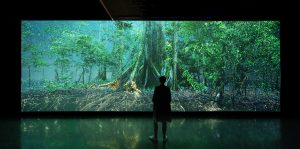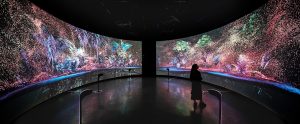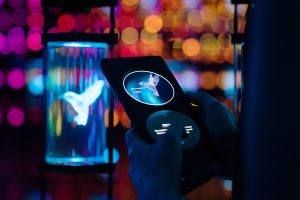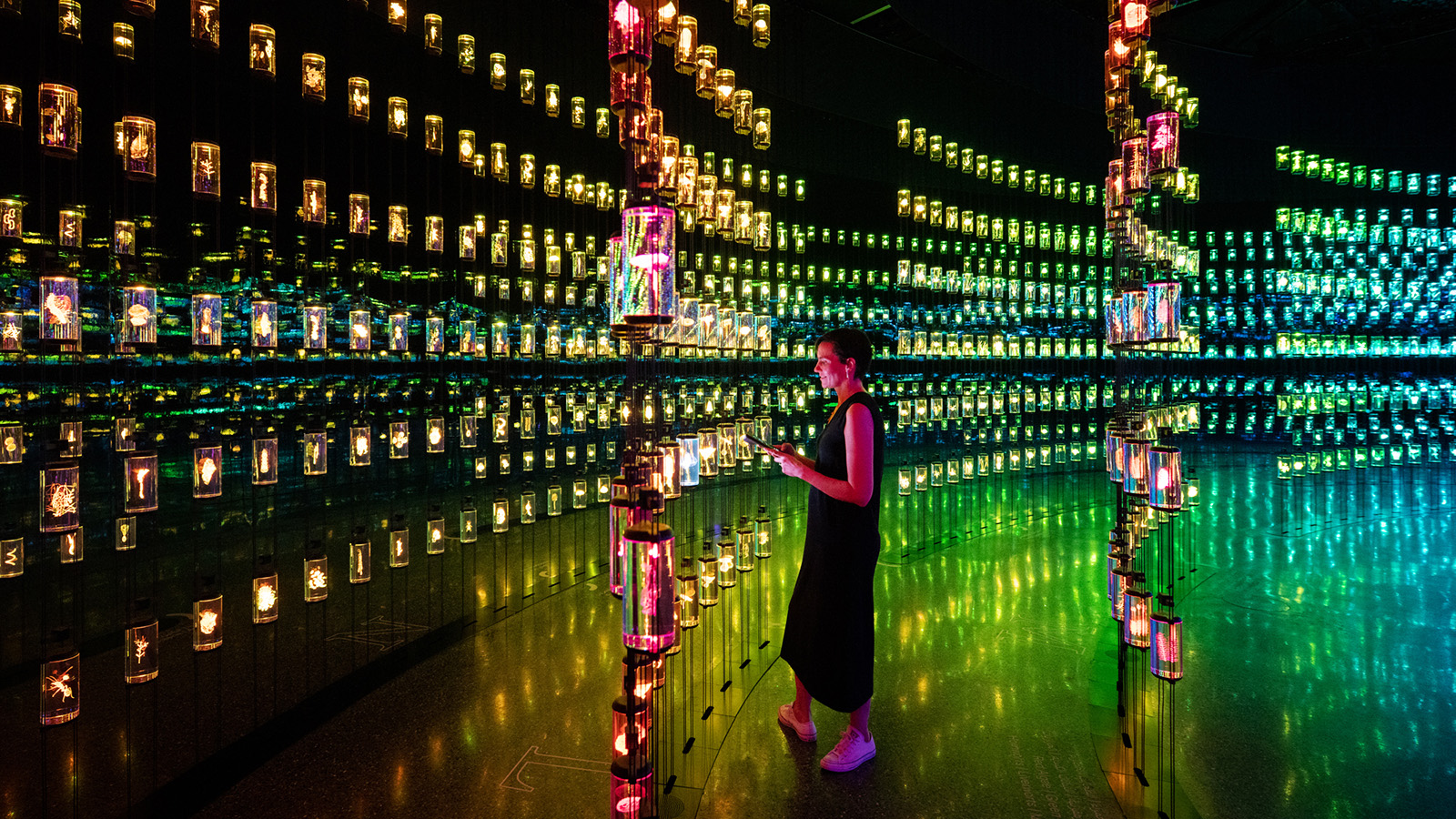The Museum of the Future, which opened in Dubai earlier this year, aims to give its visitors an opportunity to experience the future by visualizing and reimagining it. One of the most immersive experiences is a set of spectacular installations that shine light on our planet’s mesmerizing but fragile ecology and the threat to it in the foreseeable future.
Multiple creative and design studios worked in tandem to bring these futuristic installations to life. Stuttgart-based Atelier Brückner was responsible for the overall environmental and spatial design, as well as the production supervision. Superflux was responsible for the creative concept, exhibition design, and the content development of “The Library” installation, which comprises 2,400 specimen jars, each etched with an image of an existing or extinct life form. Marshmallow Laser Feast (MLF) has created a series of closely interconnected multi-sensory works called “The Forest,” “The Living Wall,” and “The Lab,” inspired by biodiverse tropical ecosystems.

“The Forest” installation by Marshmallow Laser Feast centers on the interspecies relationships that are core to sustaining the Amazonian habitat. Image: Sandra Ciampone
For both Superflux and MLF, the symbiotic nature of these living ecosystems and the urgency of action required to preserve their biodiversity were key inspirations. “We would like guests to leave with a sense of awe at the sheer diversity of creatures on the planet, thereby fostering a sense of responsibility for sustaining a vibrant ecology,” says Anab Jain, Co-Founder and Director of Superflux. “We would also like visitors to leave with an understanding of how we are impacting the planet, and have empathy for the precarity some species find themselves in.”
Ersin Han Ersin, Creative Director at MLF, echoed the same: “Our collective future depends on us understanding our interconnectedness to the natural world, and for that, we need to explore the world beyond our human senses. Bringing the invisible into view and exploring the symbiosis of everything can transform our understanding of the world — and how we interact with it.”

“Bringing the invisible into view and exploring the symbiosis of everything can transform our understanding of the world — and how we interact with it,” says Marshmallow Laser Feast’s Ersin Han Ersin. Image: “The Lab” by Marshmallow Laser Feast at Museum of the Future / Sandra Ciampone
While the visitor is likely to be captivated by the spectacular visual appeal of the installations, significant research went into presenting the subjects in an authentic manner. The MLF team worked with leading scientists and domain experts on tropical rainforest ecosystems and undertook field trips to the Colombian Amazon as part of its project development. They also leaned on the Stockholm Resilience Centre and the Cornwall Eden Project, whose network of scientists helped review their output and progress for scientific accuracy.
According to Ersin, “The hardest part was sifting through a tremendous amount of information, deciding what was more important to communicate and also doing it in a way that is accessible to the visitor without requiring any prior knowledge.”
Visually conceptualizing and designing the “Library” experience was also a mammoth task in itself. Superflux Co-Founder and Director Jon Ardern explains the design process, “We commissioned 3D designers to create high fidelity models from our plans — to render them with the correct lighting to get a sense of how it might work as a complete experience. Alongside this, we built prototypes in the studio to get a sense of the interaction and viewing our individual artifacts up close. It’s a combination of finding ways of getting close to that future and technology, and finding ways of prototyping that experience.”
While each studio worked on their respective projects, among other things, they also collaborated closely to identify core ecological insights. Through a unified research process, they identified themes such as carbon sequestration, soil detoxification, and pioneering tree species, which became a common thread through the entire floor, manifesting in the various installations in different ways.

The Biosynth enables visitors to more deeply interact with “The Library.” Image: Sandra Ciampone
A key innovation across these installations that makes the visitor experience more participative is the Biosynth, a customized handheld device developed by MLF. In MLF’s own “Forest,” it furthers the understanding of how interspecies relationships are core to the sustenance of the closely integrated community in the Amazonian habitat.
In the “Library” installation, where each of the specimen jars have an infrared QR code, visitors can point the device at the jar to scan for information about the species to learn more about its ecological role and context. The device also allows the visitors to interact and participate, inviting them to design new lifeforms that can rejuvenate a damaged ecosystem in an anticipated scenario in the future. Finally, in “The Lab,” the Biosynth acts as a feedback device, sharing the results of the visitor inputs into the ecosystem simulator.



